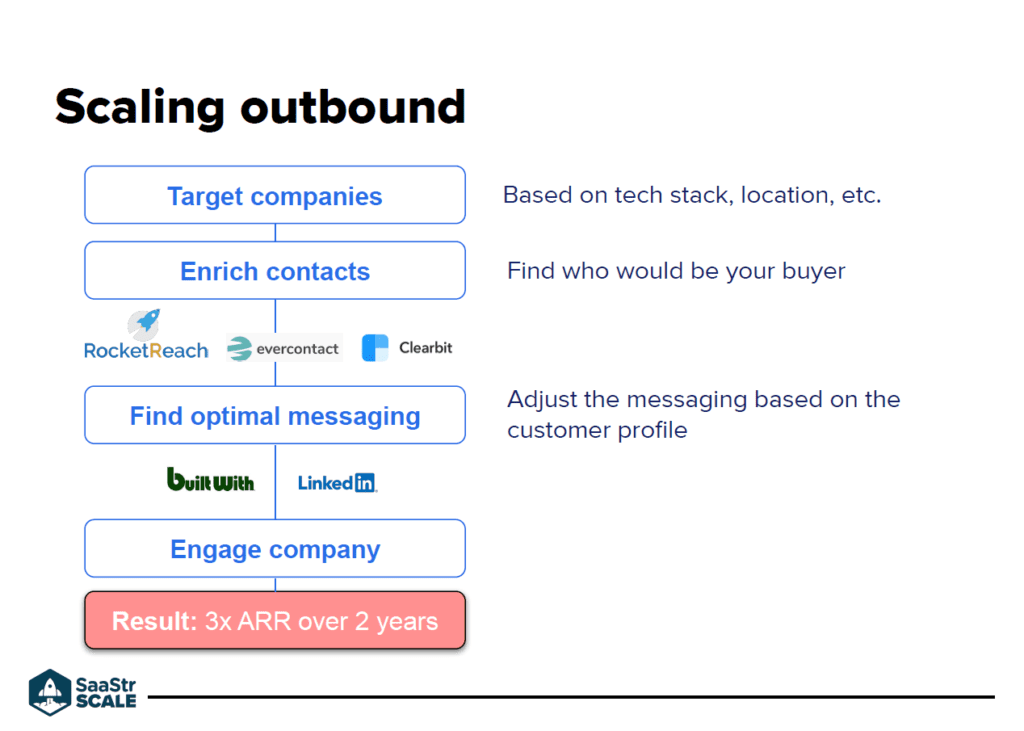Scaling a business is difficult, and scaling a SaaS business can be even more of a challenge. However, there are practical methods you can use to acquire new customers, drive higher retention, and grow your company.
Gorgias CEO Romain Lapeyre has successfully scaled the Gorgias SMB customer base from 1,000 to 10,000 by relying on data. Lapeyre shares advice on how to use data to acquire more customers and increase ARR.
Build A Map
When you are starting to search for new customers, you need a direction to focus your GTM efforts. To do that, you’ll need to formulate who your customer is. As Lapeyre says, “Before you start acquiring customers, you want to have a good understanding of who your customers are, where they are, and how you can find them.”
To help you narrow down your target market, you’ll need to use your data wisely. Lapeyre suggests that you scrape the data from the internet, then use that to tell you where to find your leads. Once the Gorgias team pulled the relevant information they needed, they began to create segments. Within each segment, they split up buckets of data in the following categories: Companies, Deal Creation, Close Rate, ACV, Market Share (which measures Gorias customer vs. competitor market share) and NRR. These buckets create a map that reveals details about your TAM.
The segments and corresponding buckets help Lapeyre understand where to focus energy acquiring.

Want more? Enter your email below for the latest SaaStr updates
Scale What Works
Once you have created your map, you’re ready to think about scaling. Lapeyre believes that you should consider your strategy as a growth engine. Inputs into the engine include things like prospects and partners that yield outputs like customer value and ARR. Be consistent with the growth machine you have –– you don’t need to over-extend yourself with too many channels at once when you’re trying to grow. “I strongly believe that to grow from [1,000 to 10,000 customers], what you need to do is launch one or two new channels, but the bulk of the results is going to be provided by you scaling what you have and what works,” Lapeyre says.

Measure Customer Success
Tracking your company growth is one thing, but a key component that contributes to your scalability is how happy your customers are and how well you are able to retain them. Lapeyre advises that business leaders use data to keep their fingers on the pulse of customer satisfaction. “When you are super focused on data, one thing you can do that’s very valuable is to start thinking about what is success, what is performance for your customers.”
Orient your mindset toward delivering value to each customer so that they want to stay with you and grow with you. First, identify what your customers’ goals are. Then you’ll need to find ways of measuring customer performance in achieving those goals. Finally, you want to figure out how you can help them.
Gorgias developed a customer experience score to determine where customers were falling on the scale. They based it from 1 to 5, and made it a point to work on raising that score. Their goal was to empower all their merchants to deliver exceptional customer experiences, and the way they helped deliver that was to measure the customer progress to a score of 5.
After one year, they increased the score from a 2 to a 3. And this matters –– customers with a higher experience score retain 20% better.

Accelerate the Flywheel
Finally, you need to make it easy for your top customers to act as your champions. First, identify success moments. These moments could be things like writing a positive review or completing a customer education course. Once the rapport is there, you can incentivize referrals. For example, Gorgias offered a free iPhone to anyone who referred a client.

Romain’s Final Takeaways
- Build a data-driven culture by collecting the data and empowering your team to use it.
- Build a clear map of your TAM so you can identify where to focus your go-to-market efforts.
- Increase the efficiency of the channels that already work. Impact: 3-5x ARR increase over two years.
- Track your product’s ROI for your customers, and make it your north star. Impact: 25% improvement over one year.
- Build a new growth channel with satisfied customers. Impact: +5% growth after two years.

